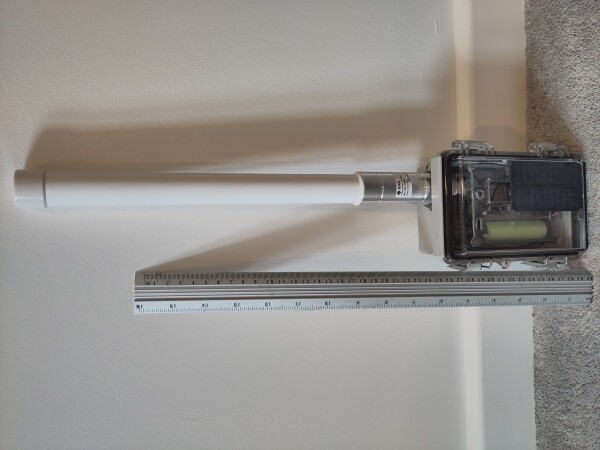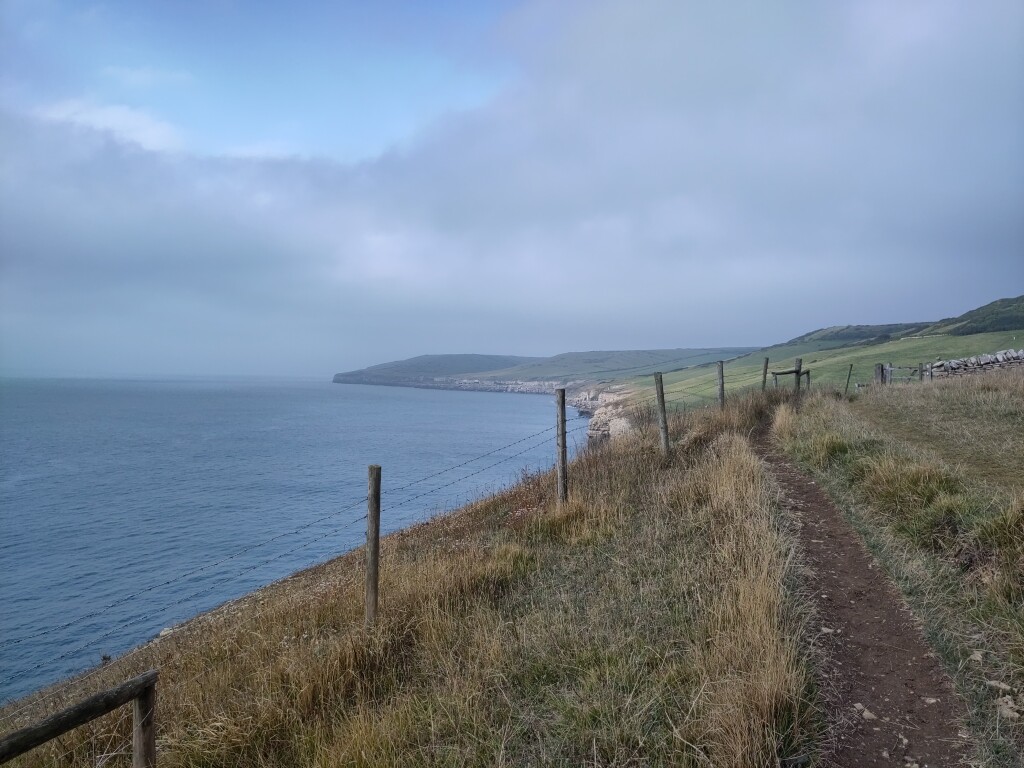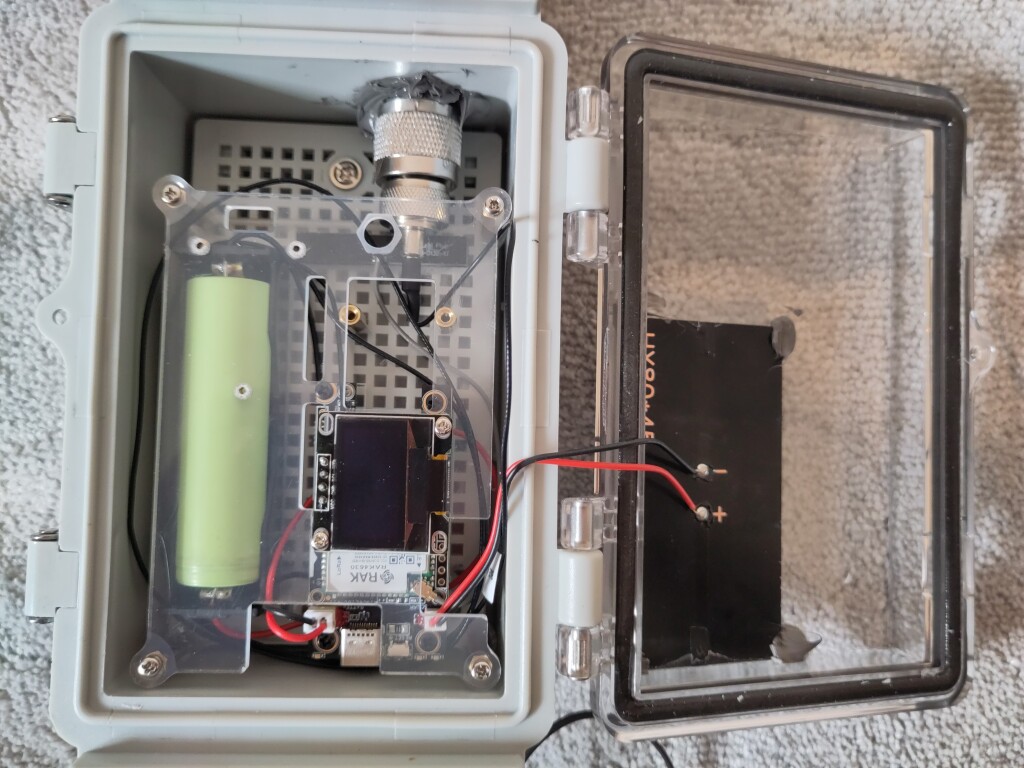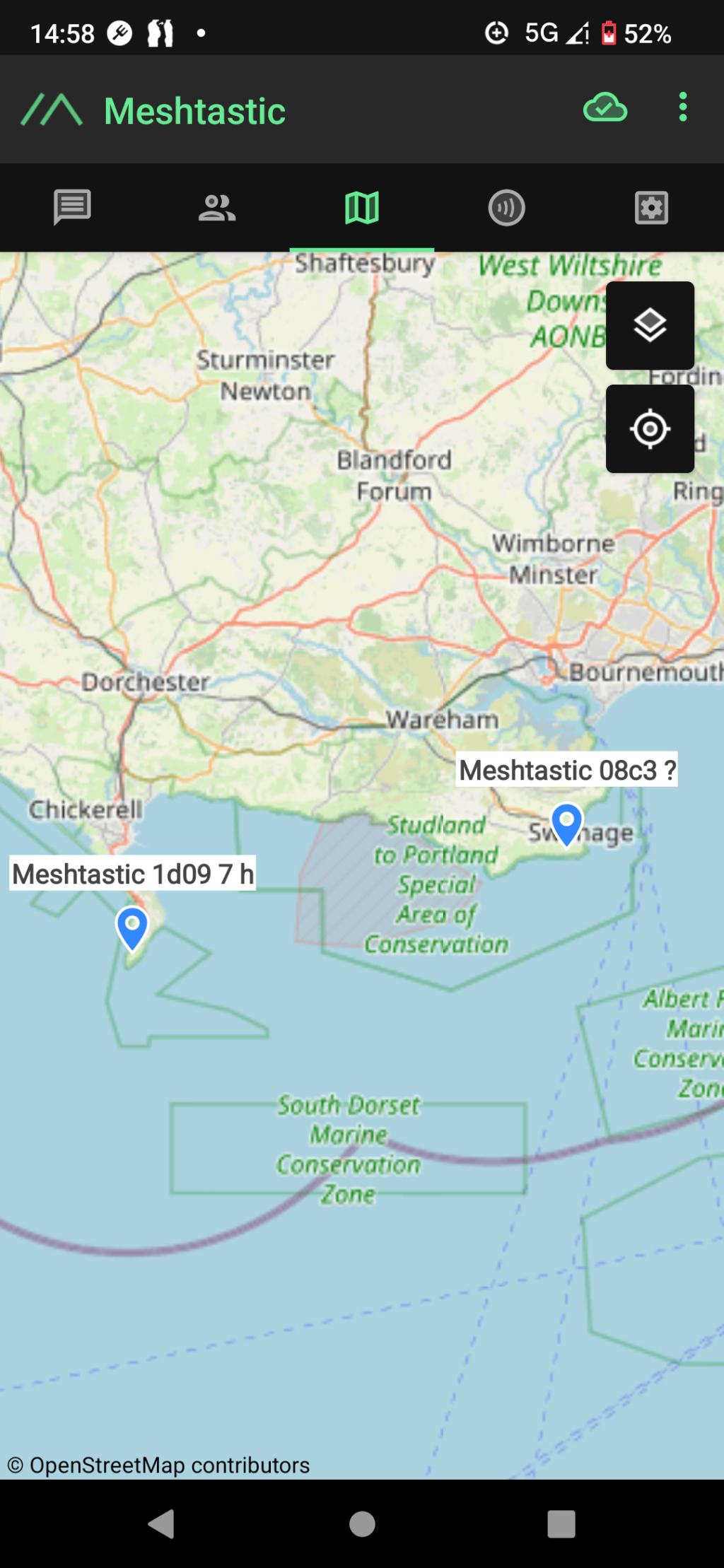Each time I do some experiments with #LoRa I’m stunned by human ingenuity which led to invention of these protocols. A small radio powered by a 18650 provided a reliable two-way communications over ~30 km.
On both ends I was using #Meshtastic node built on WisBlock Meshtastic Starter Kit. What makes a huge difference in comparison to my past experiments is the antenna: On the tiny PCB antenna that comes with the WisBlock kit you can get at best ~200 m in mixed urban terrain, but in most cases it will be less than that.
Merely adding RAK 3 dBi and 5 dBi fiberglass antennas made a huge difference: in urban terrain I was easily getting 1-3 km range with no line of sight. But then I used an opportunity of a walk around Swanage to test it even further: I left one node (5 dBi) at Portland Bird Observatory and took the smaller 3 dBi node with myself for the walk. Right after leaving from Swanage I didn’t get any packets through. I was a bit disappointed, but it came out it’s because the start was well hidden behind a hill. Once I got on top of the cliffs, messages started to come through reliably well under 1 second on the default
The measured distance at the most remote reception point was ~30 km. If I wasn’t shy and asked the manager of the Portland lighthouse for access to the top, it would be very likely much further.
The long-distance link won’t work in crevasses, but here comes Meshtastic with its peer-to-peer routing. You don’t need line of sight as long as there’s some node above you that will route your message to the remote link. And because a RAK node can easily recharge battery from a small PV panel placed inside the enclosure (!), a router node could be feasibly placed on a tall tree and largely forgotten.
LoRa has low bandwidth, so it’s mostly suitable for sending relatively short text messages which is not very attractive at the time of 5G. At the same time I find it very interesting to research and test such communication methods, as situations when you don’t have that 5G or even 2G are entirely feasible with aging electrical and communications infrastructure, especially with extreme weather conditions becoming more and more frequent…
On both ends I was using #Meshtastic node built on WisBlock Meshtastic Starter Kit. What makes a huge difference in comparison to my past experiments is the antenna: On the tiny PCB antenna that comes with the WisBlock kit you can get at best ~200 m in mixed urban terrain, but in most cases it will be less than that.
Merely adding RAK 3 dBi and 5 dBi fiberglass antennas made a huge difference: in urban terrain I was easily getting 1-3 km range with no line of sight. But then I used an opportunity of a walk around Swanage to test it even further: I left one node (5 dBi) at Portland Bird Observatory and took the smaller 3 dBi node with myself for the walk. Right after leaving from Swanage I didn’t get any packets through. I was a bit disappointed, but it came out it’s because the start was well hidden behind a hill. Once I got on top of the cliffs, messages started to come through reliably well under 1 second on the default
FAST_LONG radio setting (SF11). Note that Meshtastic doesn’t merely send and forget, it sends a packet and expects an acknowledgement, so you need to actually have a reliable two-way link for it to show packets properly sent.The measured distance at the most remote reception point was ~30 km. If I wasn’t shy and asked the manager of the Portland lighthouse for access to the top, it would be very likely much further.
The long-distance link won’t work in crevasses, but here comes Meshtastic with its peer-to-peer routing. You don’t need line of sight as long as there’s some node above you that will route your message to the remote link. And because a RAK node can easily recharge battery from a small PV panel placed inside the enclosure (!), a router node could be feasibly placed on a tall tree and largely forgotten.
LoRa has low bandwidth, so it’s mostly suitable for sending relatively short text messages which is not very attractive at the time of 5G. At the same time I find it very interesting to research and test such communication methods, as situations when you don’t have that 5G or even 2G are entirely feasible with aging electrical and communications infrastructure, especially with extreme weather conditions becoming more and more frequent…





kravietz 🦇
•And I have an actual real-world use, relevant to my line of occupation: these two will be base stations for an underground Meshtastic network which I plan to test for cave communications and cave rescue. No solar panels down there, but if a smaller variant can hold for a few days on a single charge, possibly in super-sleep mode, that will do the job.
#Meshtastic #LoRa
MiKlo:~/citizen4.eu$💙💛
kravietz 🦇
•Jeszcze nie ale zaraz wystawię!
kravietz 🦇
•Tymczasowo tutaj https://github.com/semper-ad-fundum/vangelis
GitHub - semper-ad-fundum/vangelis: Long range, low power messaging system based on Meshtastic relays suitable for underground communications
GitHubMiKlo:~/citizen4.eu$💙💛 lubi to.